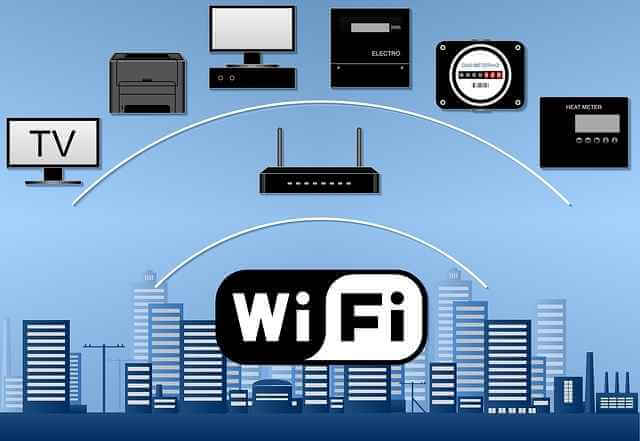With work-from-home, online streaming, and smart home products a necessity in today’s day in age, nothing is more frustrating than a slow or laggy Wi-Fi connection.
While lots of people are quick to point the finger at their internet service provider or assume they need to pay out for new top-of-the-line hardware, the issue may have a much simpler solution.
The position of mundane objects in your house can have a big impact on your Wi-Fi speed and range. By moving around these things, you might get better service without spending a nickel.
Why Wi-Fi Signals Get Blocked
Wi-Fi signals are a type of radio wave that send and receive data through the air to connect devices (like your laptop, smartphone, and smart TV) wirelessly and without using lines or cables to your router.
These signals are weak, and can be easily jammed, reflected, or absorbed by some materials. Even everyday items like furniture, appliances or decor can impact the strength of your connection.
The usual culprits, including metal, concrete and dense walls, are notorious for blocking Wi-Fi signals, but even lowly household objects can be an impediment if they are near your router or devices.
Common Things That Cause Wi-Fi Interference
- Metal Objects
Metal reflects Wi-Fi, so dead spots or sluggish speeds can result in your home. Cabinets, refrigerators and metal shelving units are also common culprits that block signal. If these are in close range of your router, it can interfere with the signal being shared evenly.
Solution: Keep metal objects a few feet or more away from the router. Holes or gaps in walls can limit Wi-Fi connectivity as well. Make sure your router isn’t hidden by metal furniture or appliances.
- Large Furniture
Couches, bookshelves and big wooden furniture might look innocent, but can obstruct Wi-Fi signals, particularly if they’re thick or filled with books. The objects absorb or scatter the radio waves, undermining the connection.
Solution: Sit your router on a shelf or table that is above the ground and not near pieces of large furniture. Don’t put the router down on the floor or in back of large wooden bookcases.
- Mirrors and Glass
Though it might not look like much, glass can work like a mirror and redirect your Wi-Fi signals where you weren’t expecting them to go – and that can mean interference and signal loss.
Solution: Where possible, keep mirrors out of the way of the router and between your devices and the router. Don’t put router in a position where it would be blocked by large mirrors.
- Aquariums
Strangely enough, tanks of water can actually inhibit Wi-Fi. Water is a radio frequency sponge and if fish tanks are near routers and radios, signal loss can be substantial.
Solution: Move the router far away from aquariums. To be safe, try to keep a distance of at least a few feet between the water and your router.
What’s the best way to maximize Wi-Fi performance?
- Centralize the Router
Set the router in the middle of the home to ensure signal coverage is uniform. Don’t put it in a corner or up against outside walls.
- Elevate the Router
Higher placement improves range. Place your router on a shelf or wall-mount it to help spread the signal.
- Limit Obstacles
Try to remove a lot of the stuff between the router and your devices. By keeping the area open and free of too many objects, you allow signals to travel freer.
- Test Different Locations
You can test the strength of the signal throughout different part of your home with free Wi-Fi analyzer apps. Rearrange the router or some furniture to get the best setup possible.
When to Consider an Upgrade
Although shifting everyday things around in your house may boost Wi-Fi effort and speed, it’s not a solution to keep forever.
If you have a more dated router or a particularly sprawling space, the best performance might come from an upgrade to a more modern router (one with better range) or from adding a mesh Wi-Fi system.
You don’t need to invest in an expensive solution to get the most out of your internet connection. Small adjustments such as relocating metal objects, large pieces of furniture, mirrors or aquariums can make a big difference in the speed and coverage of your home network.
By strategically positioning your router in an open, central location and minimizing physical obstructions, you can enjoy faster, more reliable internet everywhere in your home.
Simple changes can solve these Wi-Fi problems.


